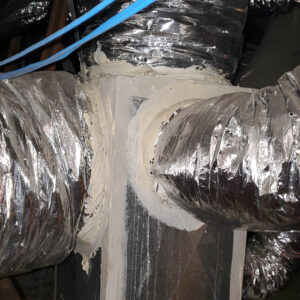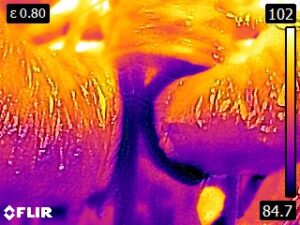Thermal Imaging
Thermal imaging cameras can reveal many issues not visible to the naked eye.
HVAC Leaks
The purpose of your air conditioning system is to produce cool air and at the same time maintain acceptable humidity levels in the conditioned areas of our homes. The climate in Southeast Texas often reaches 80% and above relative humidity. This puts a huge responsibility on our air cooling systems. The recommended range relative humidity in our homes is between 30% and 50%.
Interior relative humidity levels greater than 60% provide enough moisture to stimulate mold growth.
This is very difficult to obtain, so it is critical that our HVAC systems are running properly. If there are leaks in your air delivery system the unit(s) will have to work that much harder to cool and dehumidify. This causes your unit to wear out sooner, higher utility bills, and the formation of enough moisture to cause mold growth at each leak.
Plumbing Issues
Thermal Imaging cameras can detect plumbing leaks in the early stages to help prevent serious water damage. Plumbing leaks in the attic can cause damage to insulation, sheet rock, structural components, walls and under flooring. An important place to check for water leaks is the ceiling below second-floor bathrooms and laundry rooms. Remember that plumbing leaks can not only just occur in our hot and cold water supply pipes but also in our drain lines which go through ceilings, walls, and under floors.
How Efficient Is Your Home
With home ownership comes a certain level of responsibility. Homeowners that keep up with maintenance issues are more likely to have a more efficient home. If there are air leaks in your HVAC system, leaks around exterior doors and windows, missing insulation in your walls or ceilings this leads to higher utility bills and more wear and tear on any appliances that cool or heat your home (this includes freezers, refrigerators and your HVAC system).



